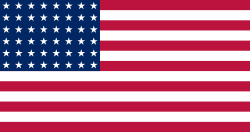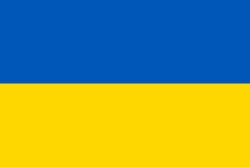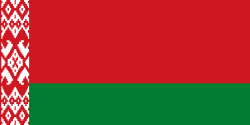Ri Ho-jun
| Ri Ho-jun | |||||||
|---|---|---|---|---|---|---|---|
 | |||||||
| Nation | |||||||
| Geburtstag | 1. Dezember 1946 | ||||||
| Geburtsort | Nordkorea | ||||||
| Größe | 176 cm | ||||||
| Gewicht | 75 kg | ||||||
| Beruf | Soldat | ||||||
| Karriere | |||||||
| Disziplin | Sportschießen | ||||||
| Status | nicht aktiv | ||||||
| Medaillenspiegel | |||||||
| |||||||
| Koreanische Schreibweise | |
|---|---|
| Chosŏn’gŭl | 리호준 |
| Revidierte Romanisierung | I Hojun |
| McCune- Reischauer | Ri Hojun |
Ri Ho-jun (kor. 리호준) oder auch Li Ho-Jun (* 1. Dezember 1946)[1] ist ein nordkoreanischer Soldat der Koreanischen Volksarmee sowie Sportschütze. Er gewann bei den Olympischen Sommerspielen 1972 in München die erste olympische Goldmedaille überhaupt für sein Land.
Leben
Ri Ho-jun wurde 1946 im heutigen Nordkorea geboren, sein Geburtsort ist nicht bekannt. Er diente für die koreanische Volksarmee und begann seine sportliche Laufbahn als Sportschütze.
1972 entsandte Nordkorea erstmals eine Delegation zu den Sommerspielen. In der Disziplin Kleinkaliberschießen (50 m, liegend) stellte er mit 599 Ringen einen neuen Weltrekord auf. Später nahm er noch an den Olympischen Sommerspielen 1976 (Montreal) sowie den Olympischen Sommerspielen 1980 (Moskau) teil, gewann jedoch keine Medaille mehr.
Anmerkungen
Nach seinem Gewinn der Goldmedaille gab er an, beim Zielen auf die Scheiben an Widersacher des Klassenfeindes (Südkorea) gedacht zu haben.[2]
Weblinks
- Offizielles Profil auf olympic.org
Einzelnachweise
- ↑ Li Ho-Jun Bio, Stats, and Results. In: Olympics at Sports-Reference.com. Archiviert vom (nicht mehr online verfügbar) am 23. Dezember 2016; abgerufen am 23. Dezember 2016. Info: Der Archivlink wurde automatisch eingesetzt und noch nicht geprüft. Bitte prüfe Original- und Archivlink gemäß Anleitung und entferne dann diesen Hinweis.
- ↑ Nordkorea: Gold und Liebe für den großen Führer Kim - WELT. In: DIE WELT. Abgerufen am 23. Dezember 2016.
| Personendaten | |
|---|---|
| NAME | Ri, Ho-jun |
| ALTERNATIVNAMEN | Li, Ho-Jun |
| KURZBESCHREIBUNG | nordkoreanischer Sportschütze |
| GEBURTSDATUM | 1. Dezember 1946 |
Auf dieser Seite verwendete Medien
Pictograms of Olympic sports - Shooting. This is unofficial sample picture. Images of official Olympic pictograms for 1948 Summer Olympics and all Summer Olympics since 1964 can be found in corresponding Official Reports.
Olympic Rings without "rims" (gaps between the rings), As used, eg. in the logos of the 2008 and 2016 Olympics. The colour scheme applied here was specified in 2023 guidelines.
The Korean characters "한국어, 조선말" meaning Korean, made using the GungsuhChe truetype font
Olympic Rings without "rims" (gaps between the rings), As used, eg. in the logos of the 2008 and 2016 Olympics. The colour scheme applied here was specified in 2023 guidelines.
US Flag with 48 stars. In use for 47 years from July 4, 1912, to July 3, 1959.
The Canadian Red Ensign used between 1921 and 1957.
This image has compared for accuracy (mainly colors) using an image from World Statesmen. The only change is making the maple leaves green from red. This image has compared for accuracy (mainly colors) using an image from World Statesmen. The most recent version of this image has changed the harp into one with a female figure; see [http://flagspot.net/flags/ca-1921.html FOTW
The Canadian Red Ensign used between 1921 and 1957.
This image has compared for accuracy (mainly colors) using an image from World Statesmen. The only change is making the maple leaves green from red. This image has compared for accuracy (mainly colors) using an image from World Statesmen. The most recent version of this image has changed the harp into one with a female figure; see [http://flagspot.net/flags/ca-1921.html FOTW
Die Olympiaflagge der gesamtdeutschen Mannschaft von 1960 und 1964, sowie beider deutschen Mannschaften 1968.
Die Olympiaflagge der gesamtdeutschen Mannschaft von 1960 und 1964, sowie beider deutschen Mannschaften 1968.
Flag of South Korea from 21 February 1984 to 15 October 1997, when the exact colors were specified into their shades.
Flag of Romania (24 September 1952 - 21 August 1965)

Construction sheet of the Flag of Romania as depicted in Decree nr. 972 from 5 November 1968.
- l = 2/3 × L
- C = 1/3 × L
- S = 2/5 × l
LG52 1972 Wire Photo HO JUN LI North Korean Small Bore Rifle Olympic Medalist

















